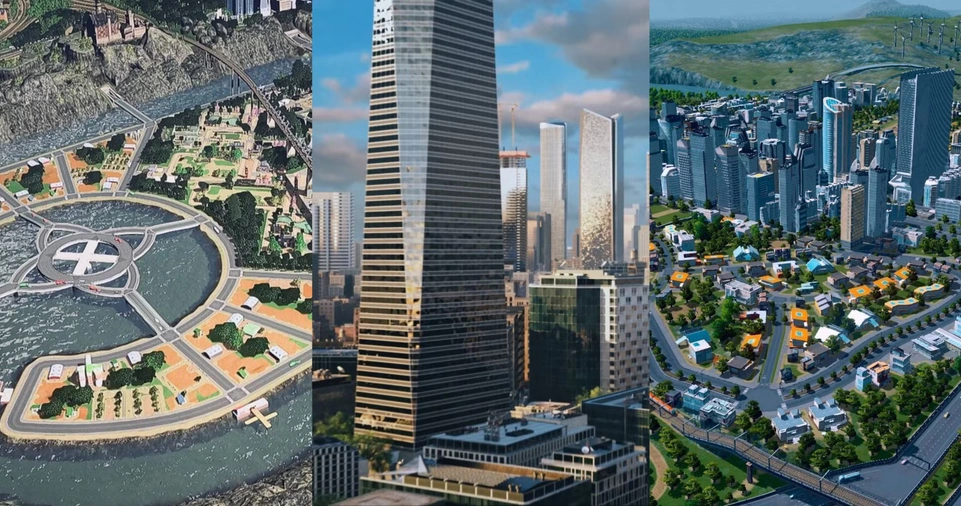SimCity and Cities: Skylines are two of the most popular city-building simulation games, offering a mix of strategy, creativity, and problem-solving.
Whether you’re a beginner or an experienced city planner, this guide will help you build and manage a thriving city while optimizing your resources.
Starting Your City: Choosing the Right Map
The foundation of a successful city starts with choosing the right map. Consider the following factors:
| Factor | Importance |
|---|---|
| Terrain | Flat areas are easier to build on, while mountains and rivers offer scenic beauty but pose challenges. |
| Resources | Access to natural resources such as oil, ore, and fertile land affects industry growth. |
| Transportation | Proximity to highways, railroads, and water bodies improves connectivity. |
| Water Supply | Essential for residents and industries, so ensure rivers or lakes are available. |
Climate and Natural Disasters
- Some maps have extreme climates that affect agriculture and electricity demand.
- Consider regions prone to earthquakes, floods, or tornadoes and prepare accordingly.
Laying Out Your Infrastructure

A well-planned infrastructure ensures efficiency and minimizes future problems.
Road Network
- Use a grid system for simplicity or an organic layout for aesthetics.
- Prioritize highway connections to reduce congestion.
- Implement roundabouts and one-way streets to improve traffic flow.
- Build bridges and tunnels to bypass heavily congested areas.
- Use public road hierarchies (highways, main roads, and local streets) to optimize traffic.
Zoning Your City
Zoning is critical for balancing residential, commercial, and industrial areas.
| Zone Type | Purpose |
|---|---|
| Residential | Houses for citizens; ensure access to amenities. |
| Commercial | Stores and offices that drive economic growth. |
| Industrial | Factories and warehouses that generate jobs. |
| Office | Alternative to industry, producing less pollution. |
| Mixed-Use | A blend of residential, commercial, and office spaces to optimize land use. |
ALSO READ: How to Level Up Faster in World of Warcraft: Tips for Beginners
Managing Public Services
Providing essential services enhances your city’s livability and attractiveness.
Power and Water Management
- Choose between coal, oil, or renewable energy sources.
- Place water pumps near clean water sources.
- Monitor electricity and water grids to avoid shortages.
- Upgrade infrastructure as the city expands to avoid bottlenecks.
Waste and Pollution Control
- Build landfills or recycling centers for waste management.
- Reduce industrial pollution by upgrading to eco-friendly policies.
- Maintain green spaces to counteract air pollution.
- Consider incineration plants to reduce landfill dependency.
Health, Education, and Safety
| Service | Importance |
|---|---|
| Healthcare | Reduces sickness and improves citizen well-being. |
| Education | Boosts workforce skill levels, improving economy. |
| Police & Fire Departments | Prevents crime and disasters. |
| Public Transport | Eases congestion and reduces emissions. |
| Parks & Recreation | Enhances property values and citizen happiness. |
Traffic and Transportation

Poor traffic management can cripple a city’s efficiency. Implement the following strategies:
- Public Transport: Introduce buses, subways, and trains to reduce car dependency.
- Traffic Flow Optimization: Use dedicated lanes, overpasses, and timed traffic lights.
- Pedestrian-Friendly Planning: Develop bike lanes and pedestrian paths.
- Cargo Transport: Build freight rail, ports, and cargo hubs to reduce truck congestion.
ALSO READ: How to Build an Effective Team in League of Legends (Champion Picks and Roles)?
Economic Growth and Budget Management
Balancing expenses and revenue is key to sustainable growth.
Revenue Sources
- Taxation (adjust rates based on demand)
- Commercial and industrial growth
- Tourism and unique city attractions
- City services such as toll roads, public transport fees, and recreational areas
Expense Management
- Avoid excessive infrastructure spending early on.
- Monitor service coverage to prevent unnecessary expenditures.
- Use budget sliders in Cities: Skylines to optimize service spending.
- Diversify revenue streams to avoid financial collapse during economic downturns.
Expanding and Future-Proofing Your City
- Unlock new land to accommodate population growth.
- Upgrade roads and infrastructure as the city scales.
- Plan disaster preparedness to minimize damages from fires, earthquakes, and floods.
- Adapt to evolving citizen needs by upgrading services and policies.
- Integrate smart city technology to improve efficiency and sustainability.
Tourism and City Attractions
- Create unique landmarks and attractions to boost tourism.
- Build entertainment districts with stadiums, theaters, and casinos.
- Develop coastal, historical, or cultural areas to appeal to visitors.
Advanced City Planning Strategies

- Mixed-Use Developments: Promote walkable communities with diverse zoning.
- Eco-Friendly Cities: Implement green energy, carbon taxes, and extensive parks.
- Underground Infrastructure: Use underground roads and utilities to free up surface space.
- Smart Traffic Management: AI-driven traffic flow monitoring for efficient urban movement.
ALSO READ: How to Win in Apex Legends?
Conclusion
Building and managing a city in SimCity or Cities: Skylines requires careful planning, resource management, and adaptability.
By following these guidelines, you can create a prosperous city that thrives economically and socially. With strategic zoning, efficient transportation, and sustainable growth, your virtual city will flourish for generations. Happy city-building!

